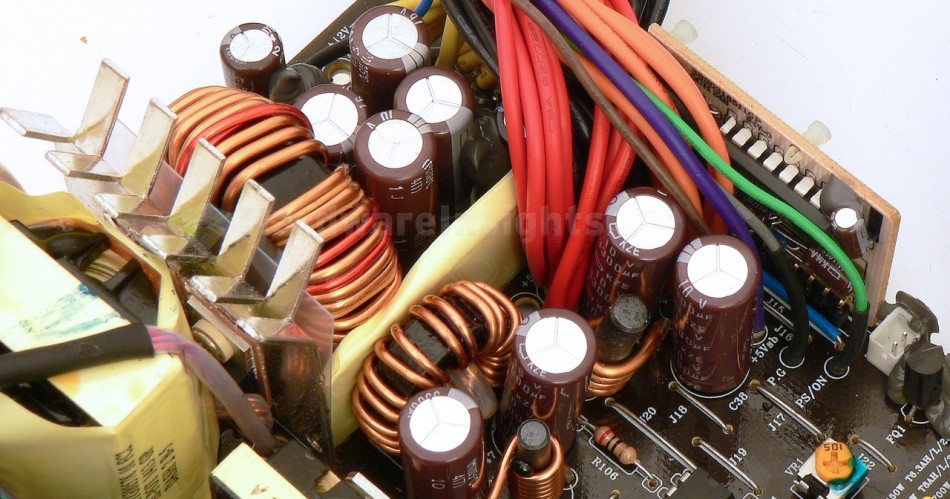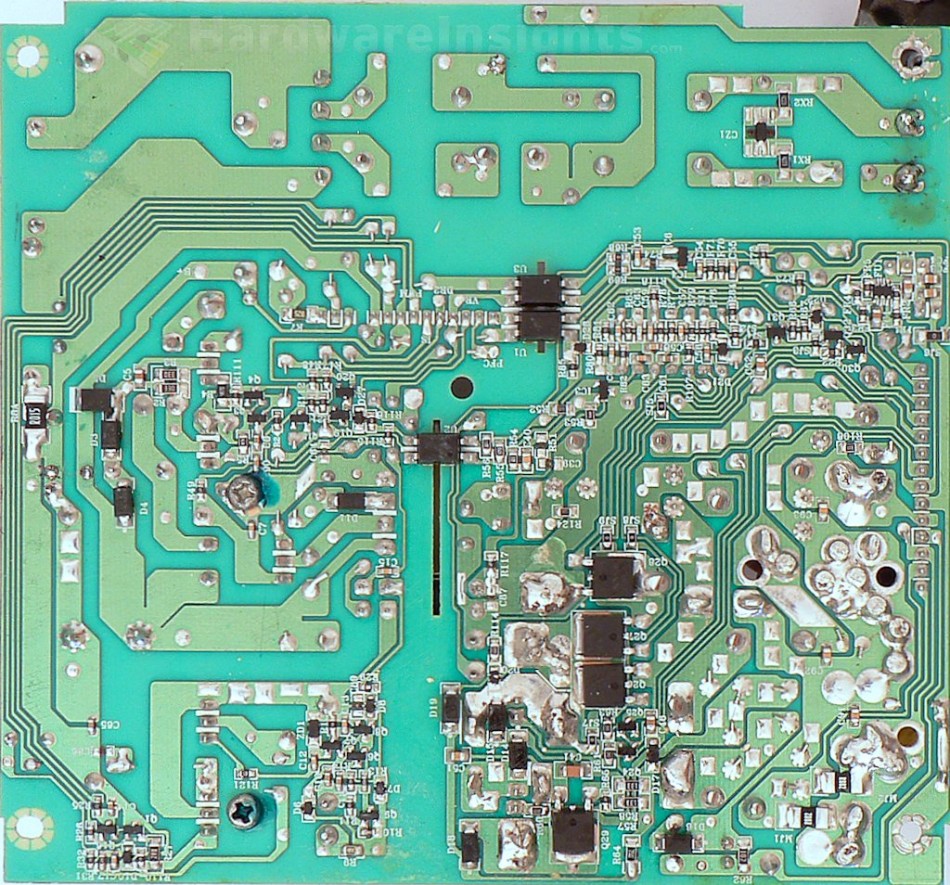Contents
- 1Introduction
- 1.1Packaging and accessories
- 2Connectors & cabling
- 2.1Casing & cooling
- 3Input filtering
- 4Primary side
- 4.1+5 V stand-by rail
- 5Secondary side
- 5.1Build quality
- 6Load testing
- 6.1Loading +5 V SB
- 6.2Voltage hold-up time
- 6.3Combined loading
- 6.4Combined loading ripple
- 6.5Crossloading, overloading
- 6.6Crossloading, overloading ripple
- 7Conclusion and evaluation
- 7.1Thanks
- 7.2Discussion
Secondary side
The main transformer is quite substantial as it carries all rails, it uses 36 mm wide core. There are two transistors used for +12V rectification, International Rectifier IRFB3306PbF (160/620 A at 25 °C and 60 V, Rds(On) 4.2 mΩ at 75 A) in TO-220 package. As usual, two Infineon ID040N03L G (90/400 A at 30 V and 25 °C, Rds(On) 5.9 mΩ at 30 A) transistors per rail (in TO-252-3-11 package) are for +3.3/+5 V rectification. Custom controller labeled 6601 is used to drive the transistors, obviously there is no public datasheet for it.
Three Chemi-Con KZE 2200/16 caps are used to filter the +12V rail, two 3300/10 for +3.3V rail and one together with Rubycon ZLH 1500/10 (D8×20 mm) are used for +5 V. The −12V rail only has a single Chemi-Con KY 1000/16. The Weltrend WT7579 is used as the secondary monitor with quality capacitor even on monitor’s daughterboard (some tiny NCC KMA). It is another custom IC as it has a 20-pin package, usually these monitors capable of monitoring UVP, OVP, OCP and OPP have 18 pins. I did not find any thermistor or other source of temperature sensing so I have no idea how this unit controls its fan. Also there is no OTP present but the box does not promise any.
Build quality
As usual I will focus on the overall build quality and other things like electrical safety here as the quality of the components used was already discussed before. As this is a cheaper platform than Aurum 92+, FSP Group moved to using only a single-sided board. So this is basically more Raider platform with efficiency upgraded back more like original Aurum. Besides the filtration coils, input rectifier and PFC coil, nothing has extra insulation but there is still quite enough room between components so no problem here. Primary and secondary side separation is good with several extra slots under the main transformer and optocouplers. Most electrodes are precisely cut or bent at least. There are more wire jumpers as this is only a single-sided board.
There is some manual (re)soldering of many joints, most of them are not cleaned afterwards, especially the input neutral and phase wires – this is not really good, as the dirt can conduct power. Also I can see about five messy joints. Paths are not really reinforced with solder, I guess thanks to that (and maybe a proper cleaning for a change) I did not find many solder balls, I counted five, this is quite OK. But because of that messy soldering and overall below average (for high-end) built quality I still take 15 points down.



